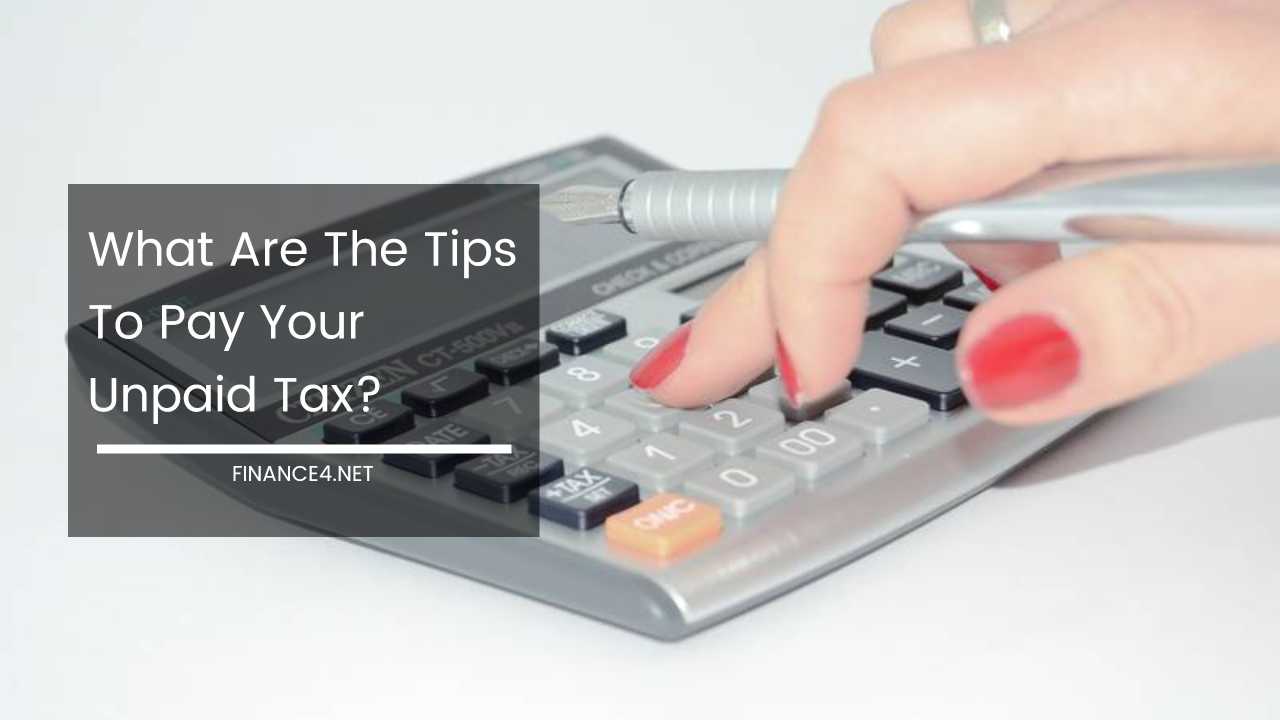Unpaid Taxes? How to Settle Your Debt & Avoid Trouble

Taming the Tax Tiger: A Comprehensive Guide to Settling Unpaid Tax Debts
Unpaid taxes can feel like a snarling tiger waiting to pounce on your financial well-being. But with the right approach, you can tame this beast and emerge from the situation stronger.
This comprehensive guide equips you with valuable tips and strategies to navigate the process of settling your unpaid tax debts.
Step 1: Assess the Situation with a Clear Head
Panic won’t pay the taxman. Instead, take a deep breath and gather your tax documents. Determine the exact amount you owe, including the original tax liability, penalties, and accrued interest. Contact your tax authority (IRS in the US) to confirm the figures and discuss your options.
Tip 1: File Your Tax Return, Even If Empty-Handed
It might seem counterintuitive, but filing your tax return on time is crucial. It minimizes penalties and demonstrates good faith to the tax authority. Even if you can’t pay the full amount, a timely filed return shows you’re taking responsibility.
Tip 2: Unveiling Your Payment Options Arsenal
Most tax authorities offer a diverse arsenal of payment solutions to accommodate different financial situations. Let’s explore these options in detail:
- Full Payment: If you have the resources, settling the entire debt immediately is the most cost-effective strategy. You’ll avoid further penalties and interest accrual.
- Short-Term Payment Plans: Launched into battle like a quick strike, these plans allow you to pay off the debt within a short timeframe (typically 120 days). The IRS offers online payment plans for qualified taxpayers with no setup fees. However, interest and penalties will continue to accrue until the debt is settled.
- Long-Term Payment Plans (Installment Agreements): For larger debts or those requiring extended repayment periods, consider an installment agreement. These plans offer monthly payments spread over several years (up to 72 months in the US). There are usually setup fees involved, though low-income taxpayers may qualify for waivers. Keep in mind that interest and penalties continue to accumulate during the repayment period.
Pro Tip: Explore online payment options offered by your tax authority. They’re often convenient and secure ways to make regular payments towards your debt.
Tip 3: Exploring Tax Relief Programs – A Potential Lifeline
Depending on your circumstances, you may be eligible for tax relief programs that can significantly reduce your tax burden. Here are a few examples to consider:
- Offer in Compromise (OIC): This program allows you to negotiate a settlement with the tax authority, essentially paying a lump sum lower than the total amount owed. Eligibility criteria and the negotiation process can be complex. Consult a tax professional to explore your options and navigate the process effectively.
- First-Time Abatement: If this is your first time owing taxes and you have a valid reason for non-payment (e.g., serious illness), you may qualify for a penalty or interest abatement, which essentially reduces or eliminates those charges. This program offers some breathing room for first-time offenders.
Tip 4: Financing Options – A Double-Edged Sword
If the available payment plans aren’t feasible, consider alternative financing solutions. However, approach these options with caution, as they can come with their own set of challenges:
- Personal Loan: A personal loan can provide the funds you need to pay your tax debt in full. However, interest rates on personal loans can be high. Compare offers meticulously and ensure you can manage the monthly repayments comfortably before taking this route.
- Home Equity Loan or Line of Credit: If you own a home with equity, you might leverage it to secure a loan with potentially lower interest rates than a personal loan. However, this option carries significant risk. If you fail to repay the loan, you could lose your home.
- Credit Card: While not recommended due to typically high-interest rates, a credit card could be a temporary solution if you have a 0% introductory APR offer and a clear plan to pay off the debt within the introductory period. Remember, credit card debt can spiral quickly, so exercise extreme caution with this option.
Tip 5: The Art of Negotiation – Befriending the Tax Authority
Don’t be afraid to negotiate with the tax authority! Explain your financial situation and explore possibilities for lower penalties or a more manageable payment plan.
Be prepared to provide documentation to support your case (e.g., proof of income, hardship documentation). By presenting a clear picture of your circumstances, you increase your chances of a successful negotiation.
Tip 6: Seeking Professional Help – A Wise Investment
Tax laws can be a labyrinth, and navigating the process of settling unpaid taxes can be daunting. Consider consulting a tax professional like an Enrolled Agent or Certified Public Accountant (CPA).
They can provide personalized advice, help you understand your options, and guide you through the process efficiently.
Think of them as your skilled guides through the tax jungle. Here are some additional benefits of seeking professional help:
- Increased Accuracy: Tax professionals can ensure your calculations are accurate, minimizing the risk of errors that could delay your debt settlement or lead to further penalties.
- Reduced Stress: Dealing with the tax authority can be stressful. A professional can handle the communication and paperwork, freeing you to focus on other aspects of your financial recovery.
- Knowledge of Hidden Gems: Tax professionals are aware of lesser-known tax relief programs or loopholes that you might not be aware of. They can explore all possibilities to maximize your tax relief.
Tip 7: Prioritization and Budgeting – Taking Charge of Your Finances
Paying off your tax debt should become a top priority in your financial plan. Create a budget that allocates funds towards your tax payments while covering essential expenses like housing, food, and utilities.
Consider reducing discretionary spending on entertainment, dining out, or subscriptions you no longer use. Explore ways to increase your income through freelancing, a side hustle, or a temporary job. Every extra rupee helps you climb out of the tax debt pit faster.
Tip 8: Staying Organized and Communicating Effectively – Keeping the Lines Open
Maintain a well-organized system for all your tax documents and communication with the tax authority. Create a dedicated folder for tax-related paperwork and digital files.
Respond promptly to any notices or requests from the tax authority. Timely communication demonstrates your commitment to resolving the issue and avoids misunderstandings that could complicate the process.
Tip 9: Don’t Play Hide-and-Seek with the Taxman – Consequences Bite
Ignoring your tax debt is the worst course of action. It will only lead to further penalties and potentially more serious consequences. The tax authority has various tools at their disposal to collect outstanding debts, including:
- Wage Garnishments: A portion of your wages can be automatically withheld by your employer and sent to the tax authority to settle your debt.
- Federal Tax Liens: A public notice placed on your property that alerts creditors that the government has a legal claim on your assets. This can make it difficult to obtain loans or sell your property.
- Bank Levies: The tax authority can seize funds directly from your bank accounts to satisfy your tax debt.
Tip 10: Learn from the Experience and Build a Brighter Financial Future
Once you’ve settled your tax debt, take some time to reflect on what led to this situation. Was it a lack of financial literacy?
Unexpected life events? Understanding the root cause will help you prevent similar situations in the future. Here are some steps to build a brighter financial future:
- Improve Financial Literacy: Educate yourself on tax laws, budgeting techniques, and smart debt management strategies. Numerous online resources, books, and financial literacy courses are available.
- Develop a Budget and Track Spending: Create a realistic budget that tracks your income and expenses. Monitor your spending patterns and adjust your budget accordingly. There are many budgeting apps and tools available to simplify this process.
- Automate Savings: Set up automatic transfers to a savings account each payday. This “pay yourself first” approach ensures you prioritize saving for future emergencies or tax payments.
- Seek Professional Help for Ongoing Support: Consider consulting a financial advisor for personalized guidance on long-term financial planning and wealth management.
By following these tips and taking a proactive approach, you can conquer your tax debt and emerge from this experience financially stronger and more prepared for the future.
Remember, the taxman may seem like a formidable foe, but with knowledge, strategy, and perseverance, you can tame the tax tiger and achieve financial peace of mind.



